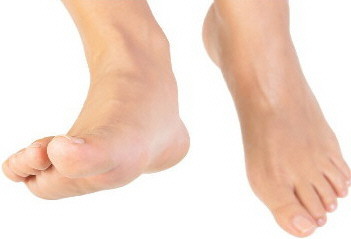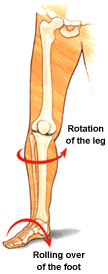Flatfeet and rotation of the leg
The feet are the foundation of the lower limb. Poor biomechanics often start with the foot. If a foot is flat or has high arches there are abnormal changes that can occur to all of the postural joints of the body.
Our feet are highly adaptable. As they hit the ground and begin to absorb load, the motion they undergo is called pronation. The flexibility of our joints determines how much energy the lower extremity chain (foot-ankle-knee-hip-pelvis-low back) can absorb.
For different reasons, both flat and high-arched feet channel a large amount of energy to skeletal structures high in this chain — especially the knee, hip and lower back—making those structures more susceptible to injury.
For example, it is common for the kneecap (patella) to develop pain because a flat foot forces the patello-femoral joint to absorb more energy. The patella can become poorly aligned because of rotation of the foot as shown in the picture below.
Running sports add ‘impact loading’ to the equation. Running and jumping amplify the effects of failed biomechanics.
Sprains and strains are likely to occur when joints are poorly aligned or when they absorb forces that should be directed to another part of the body. Make sure your footwear is supportive and appropriate for the activity you’re doing.
Did you know that we have metatarsal pads for sandals and dress shoes?
Heel lifts are used when there are leg length discrepancies – one leg can be shorter due to lower back, hip, knee, leg and/or foot issues.
Lower back pain due to the legs
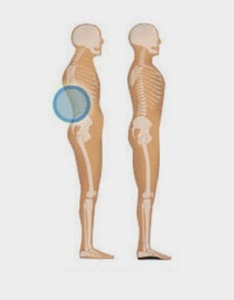 |
| Figure 2: When the feet flatten out, this causes shifting of the legs and a change to the lower back curve. |
The result is increased lordotic curvature. Increased lordosis at L1-L5 and compensatory muscular tightness of the lumbo-sacral region causes pain and discomfort especially when standing upright for longer periods of time. The thoracic region commonly develops a secondary kyphotic curvature. Unilateral pronation lowers the vertical distance of the foot to the ground, creating a functional short leg and causes a hip mis-alignment. Structural leg length discrepancy means that one leg is actually shorter than the other. In this case the patient will often present with unilateral pronation (i.e. worse on one foot) as a natural compensation for the structural imbalance.Both functional and structural leg length discrepancy can cause back pain. Patients presenting with a leg length discrepancy often also exhibit Scoliosis. Back pain can be treated with stretching and strengthening exercises, chiropractic spinal adjustments, soft tissue massage therapy, and active release. Adding orthotic therapy to your treatment regime can be beneficial. Correcting excessive pronation with FootMaxx orthotics will assist by posteriorly rotating the pelvis, thus reducing pressure on the sacro-iliac and lower back area. A heel lift should be added to the orthotic on the shorter leg. By doing so the shorter leg will be raised which aids in rebalancing the lower limb and removing compensatory mechanisms that contributes to lower back pain. If you have lower back pain, have your leg lengths checked. Also, check the alignment of your feet, femur, tibia, fibula, and patella bones checked for rotational problems. Also, have a foot scan/gait analysis. Please book an exam with Dr. Barbara Rodwin to have these checked.
Shin splints and Achilles tendonitis
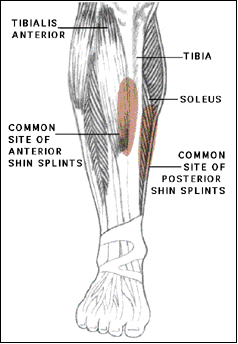 |
| Figure 3: Shin Splints |
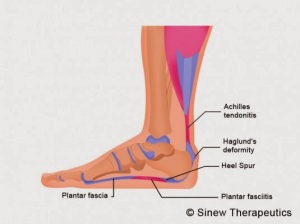 |
| Figure 4: Both the Achilles tendon and the plantar fascia |

